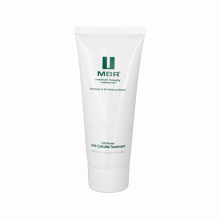Overview of Cellulite
Cellulite is the lumpy substance resembling cottage cheese commonly found on the stomach, thighs, and buttocks. While it is not officially a disease, it does refer to a condition that clearly exists. Cellulite is actually a fancy name for fat deposits that push against the connective tissue beneath a person’s skin, which causes the surface of the skin to pucker or dimple and look lumpy.
You can check to see if you have cellulite by pinching the skin around your upper thigh. If it looks a bit lumpy, you probably have it. But you are definitely not alone! Most girls and women- and some men- have cellulite. By some estimates, over 80% of adult women have some degree of cellulite.
Descriptive names for cellulite include orange peel syndrome and cottage cheese skin.
The signs and symptoms of cellulite
The main sign of cellulite is lumpy, dimpled skin, especially on the thighs, stomach, or buttocks. Despite its appearance, cellulite is harmless, and there is no pain or discomfort associated with this condition.
The causes of cellulite
The causes are poorly understood when it comes to cellulite. They may involve changes in metabolism, alterations of connective tissue, vascular changes, and inflammatory processes. Hormonal levels and heredity are thought to play a possible role in cellulite formation. Some research indicates that stress and diet may also contribute to the development of cellulite, but sound evidence is lacking.
Cellulite is not related to being overweight. Normal and underweight people can also have cellulite. Losing weight will not eliminate cellulite, but it can reduce its appearance since it makes fat tissue shrink.
Smoking, lack of exercise, fatty/starchy foods, and sitting or standing in a single position for long periods have all been correlated with an increase in cellulite. In addition, a high-stress lifestyle will cause an increase in hormones, which are believed to trigger cellulite formation.
Anti-Cellulite products
The treatment of cellulite
There is no proven or officially approved cellulite treatment. This is mainly due to the fact that there has been little clinical research done on this condition. However, there are many so-called treatments on the market, all claiming to improve the appearance of cellulite.

